Figures & data
Table 1 Appearances of the ‘Kakadu Songlines’ in Sculthorpe's Works, 1974–1996.
Table 2 Other Works by Sculthorpe, 1974–1996, Employing Melodic Quotations.
Figure 1 Asian Five-note Scale Forms used by Sculthorpe: (a) in scale (or hirajoshi koto tuning), being set class [01568], and (b) major pentatonic scale, being set class [02479].
![Figure 1 Asian Five-note Scale Forms used by Sculthorpe: (a) in scale (or hirajoshi koto tuning), being set class [01568], and (b) major pentatonic scale, being set class [02479].](/cms/asset/0d59bdb3-fc43-4eb0-b75a-0c653cbabe9c/rmus_a_761101_o_f0001g.gif)
Figure 2 ‘Kakadu Songlines’ of the Japanese Idiom: (a) Groote Eylandt Melody, and (b) Elcho Island Lament.
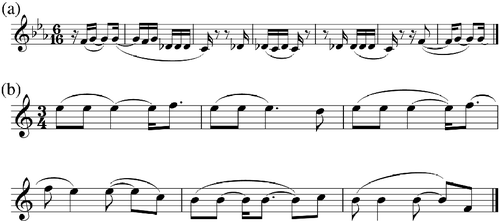
Figure 3 ‘Kakadu Songlines’ of the Balinese Idiom: (a) Torres Strait Dance-Song, and (b) Estatico Melody.
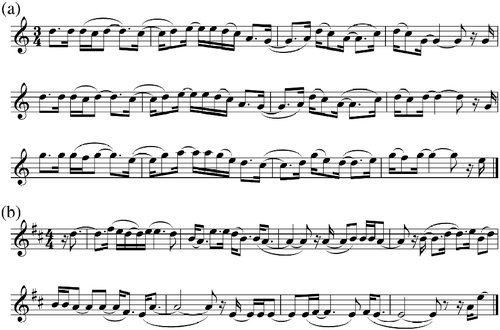
Figure 4 The Other Two Most Common ‘Kakadu Songlines’: (a) Djilile (the melody) as it appears in Djilile (the work), and (b) The French Atlas Chant as it appears in String Quartet No. 11 (Jabiru Dreaming).
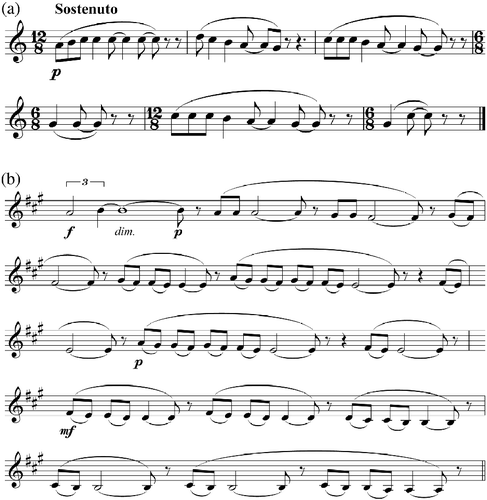
Figure 6 Comparison of: (a) the vocal melody from The Song of Tailitnama, mm. 26–40 (from 1974) with (b) the Elcho Island Lament as it appears in From Kakadu, mm. 1–6.
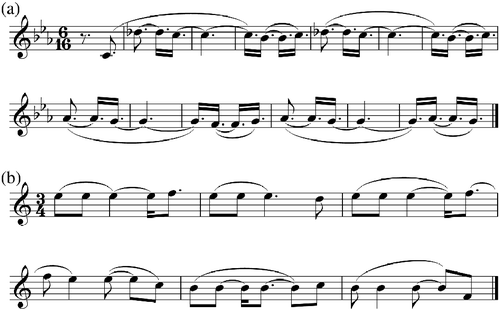
Figure 7 The Song of Tailitnama (1974, revised 1994, mm. 1–15). Note: Showing a vocal melody clearly based on the in scale and, in this case, the notes of the hirajoshi tuning of the koto (E, F, A, B, C).
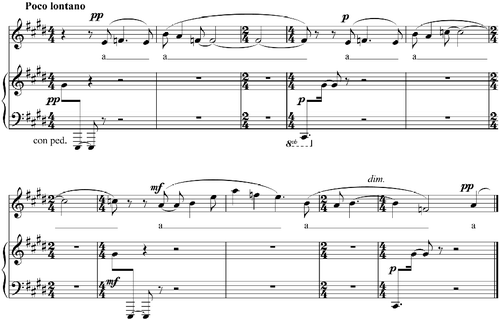
Figure 8 Tropic, mm. 13–28. Note: Showing one and a half statements of Djilile, followed by an interruption derived from the Elcho Island Lament, harmonized with all five notes of the in scale (D, E, F, A, Bb).

Figure 10 Excerpt of the Original Groote Eylandt Melody. Note: Transcribed by Trevor Jones as it appears in Covell (Citation1967, 326).

Figure 11 Excerpt from The Song of Tailitnama (Version for Soprano and Piano, 1994, mm. 25–35). Note: Showing Sculthorpe's modification of the intervals of the Groote Eylandt Melody (right hand of piano) to conform to the Japanese in scale (C, Db, F, G, Ab); what would have been D natural becomes Db.
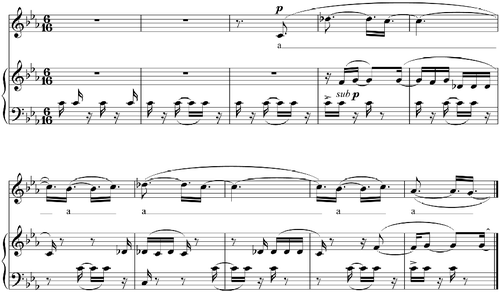
Figure 13 The Torres Strait Dance-Song (Violin 1) in Nourlangie, mm. (97) 100–12. Note: Based on a Major pentatonic scale and showing Sculthorpe's archetypal techniques for harmonizing pentatonic melodies.
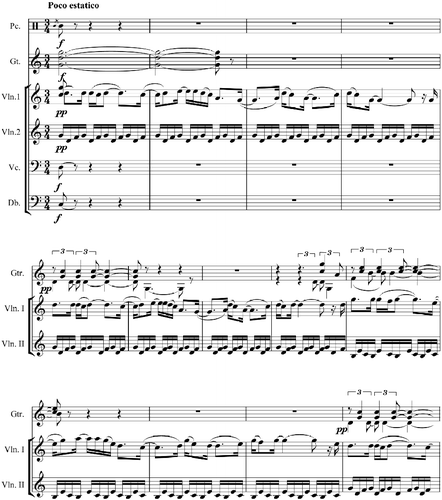
Figure 14 Excerpt from Tropic. Note: Showing the Estatico Melody (of Torres Strait origin) and Sculthorpe's archetypal techniques for harmonizing pentatonic melodies.
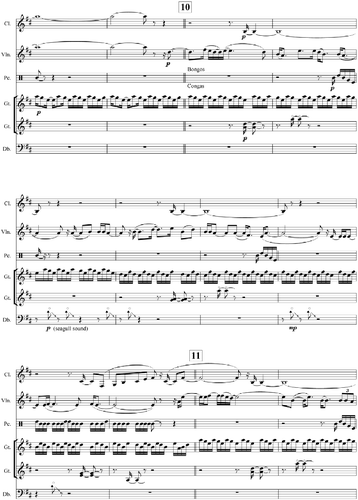
Figure 15 Comparing the Harmonic Patterns in the Ostinati (Each Consisting of a Three-note Repeating Cell) used to Accompany Pentatonic Melodies in Tropic and Nourlangie: (a) Tropic, mm. 115–16 (repeating six times) and 119–255 (repeating three times), and (b) Nourlangie, mm. 100–65 (repeating three times) and 201–62 (repeating three times).
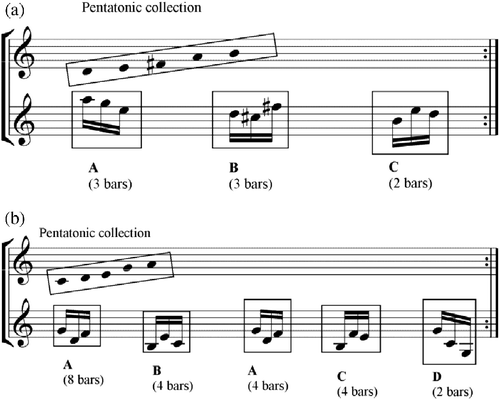
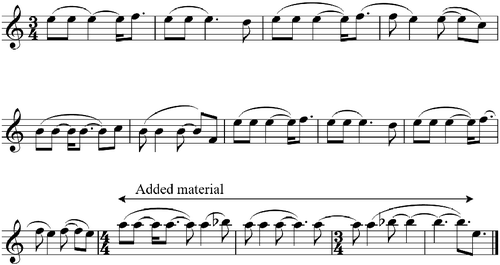
![Figure 9 Set Class [0157] in the Harmonization of the Elcho Island Lament, mm. 1–4 of From Kakadu.](/cms/asset/8f2d6e6f-4297-4e76-9f6e-4ec59b64b425/rmus_a_761101_o_f0009g.gif)
